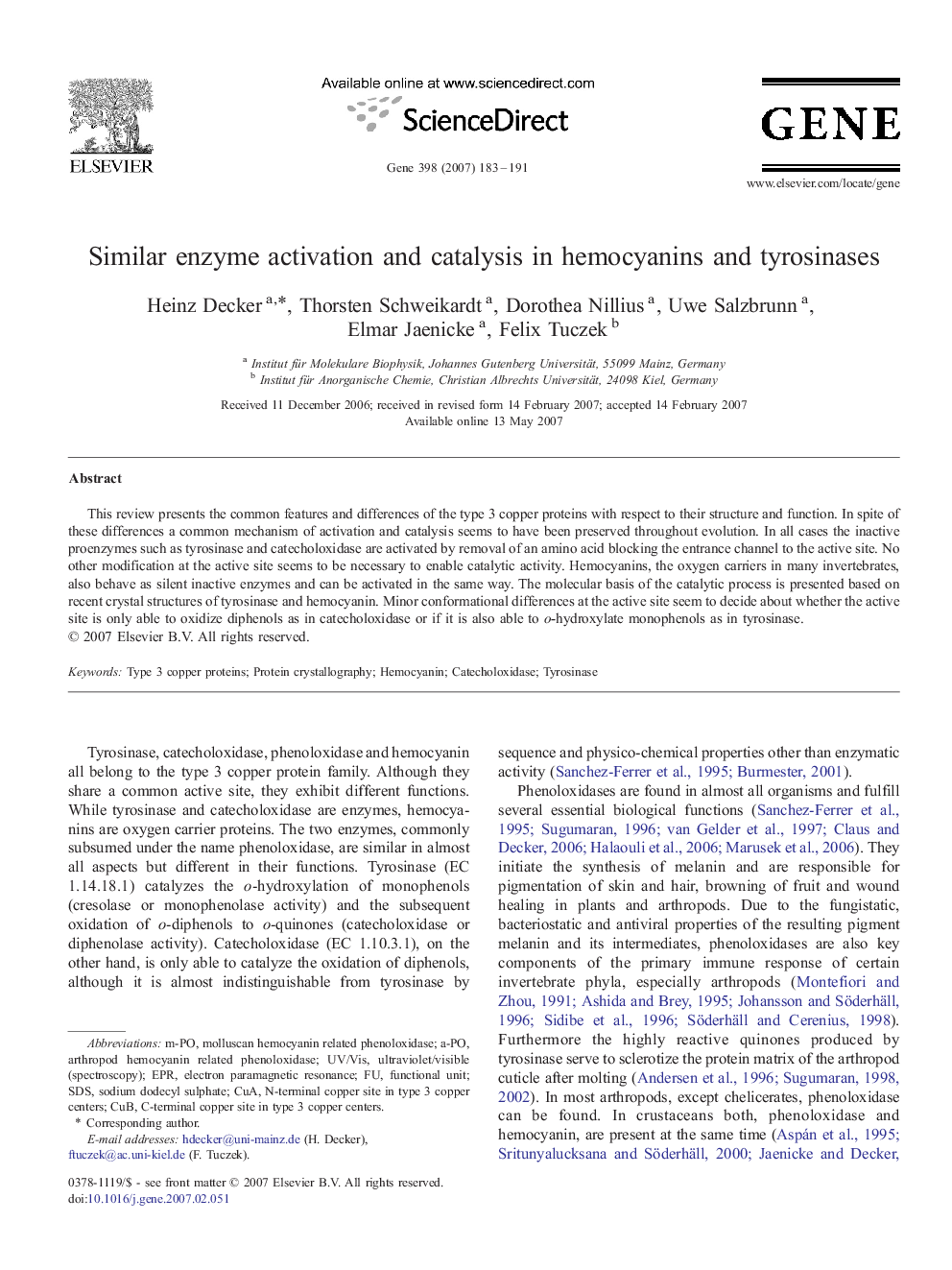| Article ID | Journal | Published Year | Pages | File Type |
|---|---|---|---|---|
| 2819655 | Gene | 2007 | 9 Pages |
This review presents the common features and differences of the type 3 copper proteins with respect to their structure and function. In spite of these differences a common mechanism of activation and catalysis seems to have been preserved throughout evolution. In all cases the inactive proenzymes such as tyrosinase and catecholoxidase are activated by removal of an amino acid blocking the entrance channel to the active site. No other modification at the active site seems to be necessary to enable catalytic activity. Hemocyanins, the oxygen carriers in many invertebrates, also behave as silent inactive enzymes and can be activated in the same way. The molecular basis of the catalytic process is presented based on recent crystal structures of tyrosinase and hemocyanin. Minor conformational differences at the active site seem to decide about whether the active site is only able to oxidize diphenols as in catecholoxidase or if it is also able to o-hydroxylate monophenols as in tyrosinase.
